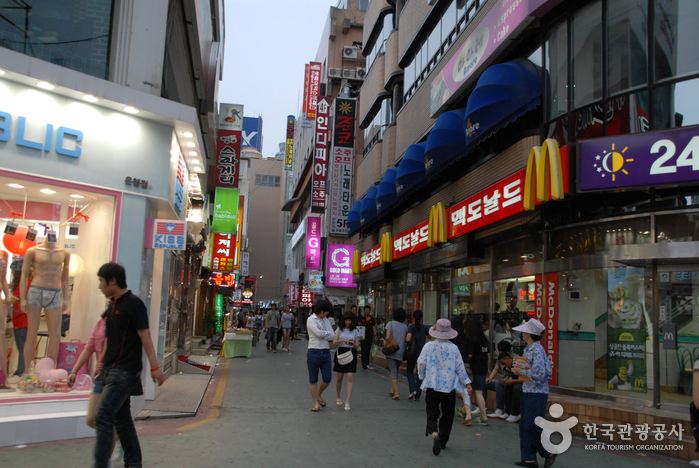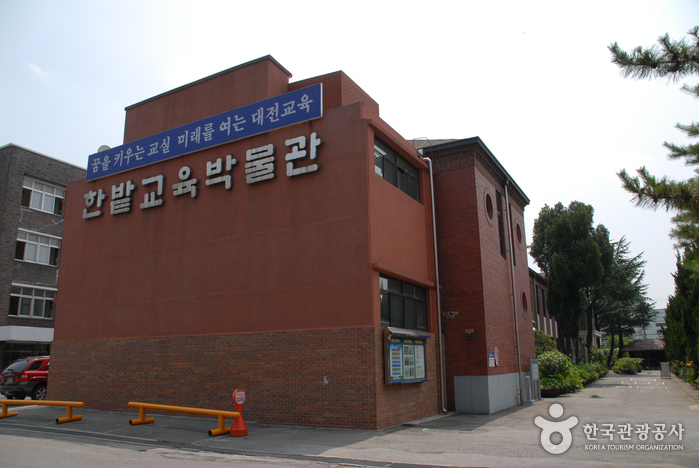Banchan Sikdang (반찬식당)
12.4Km 2024-02-15
484 Bomunsangongwon-ro, Jung-gu, Daejeon
Situated at the gateway to Bomunsan Mountain, Banchan Sikdang is known for its expertise in steamed barley rice. This dish is typically presented with vegetables and red chili paste, and it's mixed with a choice of either perilla or sesame oil, enhancing its flavors. The restaurant's standard side dishes include biji jjigae (pureed soybean jjigae), doenjang jjigae (soybean paste jjigae), and gyeranjjim (steamed eggs). Additionally, their savory green onion pancake, enriched with squid and chives, is a highly recommended specialty.
Jeongsikdang (정식당)
12.4Km 2024-03-05
37-13 Jungang-ro 130beon-gil, Jung-gu, Daejeon
042-257-5055
Jeongsikdang is a traditional Korean restaurant that has been operating in the same location since the 1980s, maintaining a legacy of taste. Renowned for its spicy dakbokkeumtang (spicy braised chicken), it has expanded to a second branch. The fried rice cooked with the remaining seasoning from the dakbokkeumtang is also delicious. In addition to its signature dish, the menu includes traditional Korean dishes such as tojong hanbang baeksuk (whole chicken soup with medicinal herbs), ori baeksuk (whole duck soup), and mikkuraji twigim (Deep-fried loach).
Wangwan Sikdang (왕관식당)
12.4Km 2024-02-15
6 Seonhwa-ro 196beon-gil, Dong-gu, Daejeon
Wangwan Sikdang, a popular eatery, opens its doors for a brief two-hour lunchtime service. The menu features two signature items: kongnamul bap (bean sprout rice) mixed with soy sauce seasoning and yukhoe (beef tartare) made with Korean beef. These dishes, especially when combined, create a harmonious and delightful flavor. Conveniently situated, it is just a 15-minute walk from KTX Daejeon Station, ensuring easy accessibility.
Eunhye Sikdang (은혜식당)
12.4Km 2024-02-29
11 Hanbat-daero 1159beon-gil, Daedeok-gu, Daejeon
042-625-5248
Eunhye Sikdang, opened in 1992, is renowned for its braised fish dishes. The signature menu item is galchi jorim (braised cutlassfish). Staying true to tradition, the dish is prepared by simmering cutlassfish with radish and a special seasoning sauce until tender, eliminating any fishy taste and adding a spicy kick. In addition to the galchi jorim, the restaurant offers a variety of Korean set menu, making it a popular choice among locals.
Sariwon Myeonok Main Store (사리원면옥 본점)
12.5Km 2024-02-23
62 Junggyo-ro, Jung-gu, Daejeon
042-256-6506
Sariwon Myeonok, a well-known restaurant in Daejeon, specializes in traditional Pyeongyang-style cuisine, with their Pyeongyang naengmyeon (cold buckwheat noodles) being the highlight of their menu. This dish is particularly notable for its light yet flavorful broth. Alongside their signature naengmyeon, the restaurant also offers other popular dishes such as galbitang (galbi soup) and sobulgogi (beef bulgogi). The galbitang is renowned for its rich flavor achieved through long simmering, and the sobulgogi is delightfully accompanied by bean sprouts and mushrooms. These main courses are complemented with hot broth and an array of standard side dishes.
ABC-Mart - Daejeon Eunhaeng Branch [Tax Refund Shop] (ABC마트 대전은행)
12.5Km 2024-04-16
161, Jungang-ro, Jung-gu, Daejeon
-
ABC-Mart - Daejeon Eunhaeng Branch [Tax Refund Shop] (ABC마트 GS대전은행)
12.5Km 2024-04-18
7, Jungang-ro 156beon-gil, Jung-gu, Daejeon
-
Nike - Daejeon Eunhaeng Branch [Tax Refund Shop] (나이키 대전은행)
12.5Km 2024-04-17
163, Jungang-ro, Jung-gu, Daejeon
-
Euneungjeongi Culture Street (으능정이문화의거리)
12.5Km 2025-03-29
5 Jungang-ro 164beon-gil, Jung-gu, Daejeon
+82-42-226-9100
Euneungjeongi Culture Street is a street located in Daejeon's original city center, resembling Seoul's Myeongdong area. It features clothing stores, restaurants, cafés, and even the flagship store of Daejeon's iconic bakery, "Sung Sim Dang." Close to Daejeon Station, it hosts the annual "Zero 0' Clock Festival," inspired by the tradition of trains departing from Daejeon Station at midnight in the past.
Hanbat Museum of Education (한밭교육박물관)
12.5Km 2021-04-09
96, Uam-ro, Dong-gu, Daejeon
+82-42-670-2200
Hanbat Museum of Education, opened on July 10, 1992, is home to 9 exhibition halls, 3 smaller exhibition areas, and outdoor exhibit areas displaying a total of 27,000 education-related items such as old school textbooks, educational books, student files, stationery, and more. The museum is particularly popular as a fieldtrip destination for local students.
Exhibition chambers at the museum house documents and items that bear witness to the history of education from the olden days (i.e. village Confucian schools) to the present. Also on display are folk materials on the ancient educational institutions of the past and the daily lives of students. Thanks to the extent and variety of its documents, the museum is a great educational institution that not only preserves the history of education in Korea, but also sheds light on hundreds of years of life, tradition, and culture.
The museum building, built on June 8, 1938, is the oldest one in the city. Used as a school and later a military base for the U.N. Peace Corps and North Korean soldiers during the Korean War, the building has never been renovated and still bears the bullet holes and other marks of its tumultuous history. In recognition of its historical importance as a local structure, the museum was designated Cultural Property Material No. 50.

![ABC-Mart - Daejeon Eunhaeng Branch [Tax Refund Shop] (ABC마트 대전은행)](http://tong.visitkorea.or.kr/cms/resource/98/2883598_image2_1.jpg)
![ABC-Mart - Daejeon Eunhaeng Branch [Tax Refund Shop] (ABC마트 GS대전은행)](http://tong.visitkorea.or.kr/cms/resource/10/2883610_image2_1.jpg)
![Nike - Daejeon Eunhaeng Branch [Tax Refund Shop] (나이키 대전은행)](http://tong.visitkorea.or.kr/cms/resource/96/2883596_image2_1.jpg)


 English
English
 한국어
한국어 日本語
日本語 中文(简体)
中文(简体) Deutsch
Deutsch Français
Français Español
Español Русский
Русский